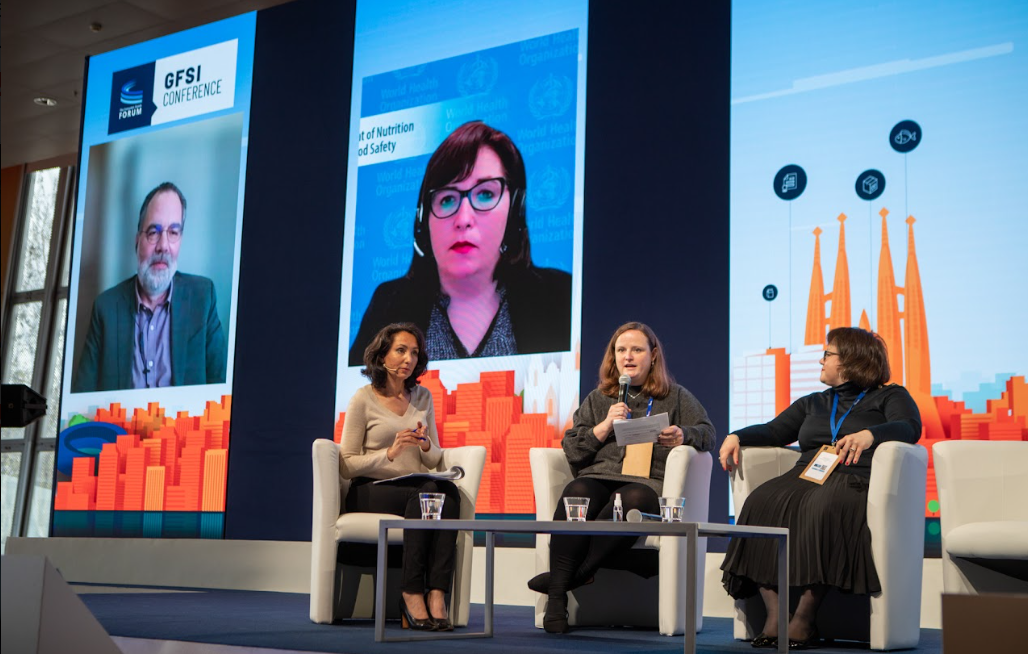United Nations food safety agencies and GFSI local groups shared the stage at the recent Global Food Safety Initiative (GFSI) conference in Barcelona.
The 600 registrants from 50 countries heard from the Food and Agriculture Organization (FAO) of the United Nations, the World Health Organization (WHO) and the World Food Programme (WFP).
Francesco Branca, director at the WHO’s Department of Nutrition and Food Safety and Catherine Bessy, senior food safety officer at the FAO, spoke about the agencies’ respective food safety strategies, which will be published later this year.
Virginia Siebenrok, head of food safety and quality at WFP, said speed is important during a crisis.
“We are in Yemen, Afghanistan, Ethiopia and now also scaling up in Ukraine. The food we distribute is the only food people have so there is a high exposure. We work in harsh and fragmented supply chains so the choice of food and packaging is key. Procurement and storage is also a challenge. Our food safety approach involves local regulations but is based on internationally recognized standards,” she said.
Siebenrok said the agency learned a lot during the COVID-19 pandemic.
“We had to do remote assessments of suppliers and deal with labs shutting down. In our work with farmers and manufacturers we need to customize interventions to make sure the value is seen. Small firms need to see the value of investing in food safety instead of something else. Local SMEs and retailers need help interpreting regulations, assessing their current standards or technical support and access to training. Operators have individual needs.”
View from FAO, WHO and Codex
Luz Maria De-Regil, from the WHO’s department of nutrition and food safety, said the private sector has a role in building evidence for decision making and in developing capacity.

“If we know what the rules are and how a system works it is easier to trust it. If we keep data for ourselves it is more difficult to trust others,” she said. “There needs to be transparency and accountability. We need enhanced data collection and sharing in relation to foodborne disease surveillance and to use that information for decision making and risk assessment.”
Most speakers talked about collaboration but Markus Lipp, senior food safety officer at FAO, said the only limitation was what groups were willing to do together.
“We have more commonalities than differences. We need to find a different language to do food safety risk communication to enhance trust. There is under development in areas such as culture and the emotional aspects of food. We don’t have the answer to convince finance ministers. It is difficult to come up with a value proposition for food safety except for prevention of a crisis. It is a reactive cycle, there is investment when there is a crisis, then no crisis for a while so investment declines,” Lipp said.
Tom Heilandt, secretary at the Codex Alimentarius Commission, said food safety is not a sexy subject.
“We learn better from mistakes and incidents. Codex is not known much with the average consumer. Food safety only gets noticed when something goes wrong. I see the impact of implemented Codex texts but how much money and how many lives have they saved? We are starting studies to find out. Absence of Codex standards doesn’t mean there are no standards but it means there may be many different ones,” Heilandt said.
Roy Kirby, of FoodsafERM, said trust is the glue of life.
“Trust arrives on foot and leaves on horseback – meaning it takes years to earn but you can lose it in an instant. Food companies will not go out there and say my product is safer than another. We are trying to be transparent with what we are doing and deliver on promises,” he said.
Action on the ground
Another session presented the GFSI local groups, including the recently formed EMEA section.

The Chinese working group, with four taskforces and 180 experts, is trying to enhance consumer confidence in food safety and make one certification recognized everywhere in China.
In Japan, the number of plants with GFSI recognized certification is more than 3,000 manufacturing sites and 1,100 farms. Since last June, the government has enforced HACCP for all food businesses. It is also providing financial and technical support to small firms to build capability.
Challenges in Latin America are the need to develop suppliers on training and food safety management system implementation, the variety in industry and differing national rules, audit performance, a lack of recognition of certification programs by governments and consumers, plus certified suppliers still having issues and not maintaining standards.
For Australia and New Zealand there were issues described with audit consistency and relationships with federal and state food safety authorities. The focus was on increasing awareness and application of food safety systems in SMEs and small primary producers plus building capability of indigenous suppliers.
The U.S. and Canada group spoke about developing food safety culture, local sourcing and supply chain challenges, the evolving regulatory landscape, and a lack of awareness of what GFSI is and isn’t. Work is ongoing to map the level of GFSI recognized certifications versus the total food firms in a region or sector and to identify firms willing to work with regulators on data sharing and capability building pilots.
(To sign up for a free subscription to Food Safety News, click here.)









